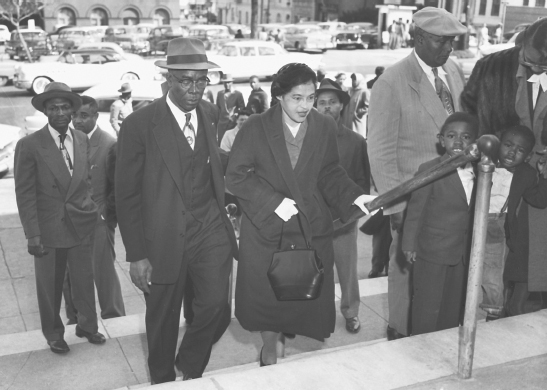How did African Americans fight for civil rights in the 1950s?
Printed Page 827

Figure false: Montgomery Civil Rights Leaders
Figure false: During the Montgomery bus boycott, local white officials sought to intimidate African Americans with arrests and lawsuits. Here Rosa Parks, one of ninety-two defendants, enters the Montgomery County courthouse. Parks later said of her actions: “People always say that I didn’t give up my seat because I was tired, but that isn’t true. I was not tired physically. … I was not old. … I was forty-two. No, the only tired I was, was tired of giving in.” Wide World Photos.
CHRONOLOGY
1954
- – Brown v. Board of Education.
1955–1956
- – Montgomery, Alabama, bus boycott.
1957
- – Southern Christian Leadership Conference (SCLC) is founded.
- – Civil Rights Act of 1957.
BUILDING ON THE CIVIL RIGHTS initiatives begun during World War II, African Americans posed the most dramatic challenge to the status quo of the 1950s as they sought to overcome discrimination and segregation. Although black protest was as old as American racism, in the 1950s grassroots movements arose that attracted national attention and the support of white liberals. Pressed by civil rights groups, the Supreme Court delivered significant institutional reforms, but the most important changes occurred among blacks themselves. Ordinary African Americans in substantial numbers sought their own liberation, building a movement that would transform race relations in the United States.